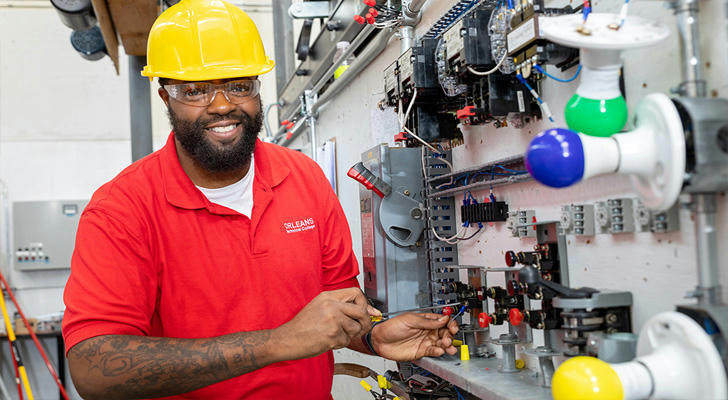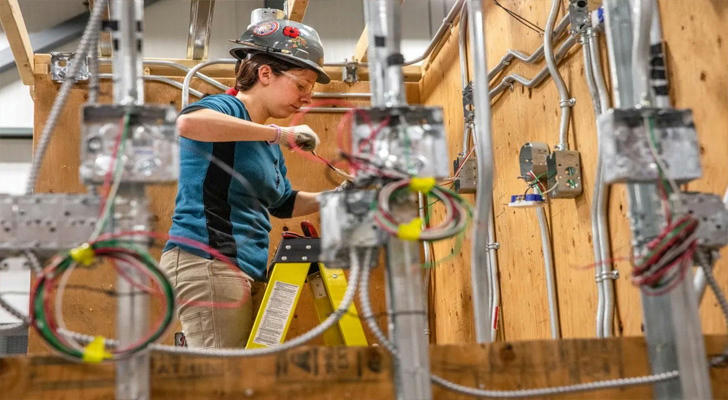Understanding Electrician Training: Skills, Education, and Career Path

Electricians are essential to modern infrastructure, ensuring that electrical systems in homes, businesses, and industrial facilities function safely and efficiently. According to the U.S. Bureau of Labor Statistics (BLS), employment of electricians is projected to grow 6% from 2022 to 2032, driven by increasing demand for alternative energy sources, building renovations, and new construction. Given the importance of electrical safety and evolving technologies, formal electrician training is crucial.

This article explores electrician training, the skills acquired, various educational pathways, and a real-life example of someone who successfully pursued this profession.
I. What Does an Electrician Do?
Electricians are responsible for installing, maintaining, and repairing electrical systems. Their job roles include:
Wiring and Installation – Ensuring safe and efficient electrical systems in homes, offices, and industrial settings.
Maintenance and Repair – Troubleshooting faulty wiring, circuit breakers, and power distribution issues.
Safety Compliance – Adhering to the National Electrical Code (NEC) and other local regulations.
Renewable Energy Systems – Installing and maintaining solar panels, battery storage units, and EV charging stations.
According to the National Fire Protection Association (NFPA), electrical failures or malfunctions were the second leading cause of U.S. home fires from 2015 to 2019. Proper training significantly reduces the risks associated with electrical work.
II. What Do You Learn in Electrician Training?
Electrician training provides theoretical knowledge and hands-on experience. Some essential areas of study include:
Electrical Theory – Understanding circuits, voltage, resistance, and current flow.
Blueprint Reading – Learning to interpret electrical schematics.
National Electrical Code (NEC) Compliance – Understanding industry safety standards.
Power Distribution – Learning how electricity is generated and delivered.
Tool Usage – Training in specialized equipment like multimeters, wire strippers, and conduit benders.
Smart Technologies – Working with automation, energy-efficient lighting, and connected home systems.
A study by the Electrical Safety Foundation International (ESFI) found that proper electrical training reduces workplace injuries by up to 60%, emphasizing the importance of hands-on learning.
III. Types of Electrician Training Programs
1.Apprenticeship Programs
The National Electrical Contractors Association (NECA) and the International Brotherhood of Electrical Workers (IBEW) offer four- to five-year apprenticeships, combining 8,000 hours of on-the-job training with classroom instruction. These programs provide a structured pathway to licensure and employment.
2.Trade School and Community College Programs
Many trade schools and community colleges offer one- to two-year programs that prepare students for entry-level positions. According to the U.S. Department of Education, graduates from accredited trade schools have an 85% job placement rate in electrical fields.
3.Online and Continuing Education Courses
For those interested in specialized areas, online courses provide training in electrical safety, automation, and renewable energy. Organizations like NFPA offer training_and_certificati that enhance skills and job prospects.

IV. Real-Life Example: Carlos' Journey into the Electrical Trade
Carlos had always been interested in how electrical systems worked. After serving in the military, he wanted a stable, technical career with long-term growth.
He enrolled in a community college electrician program, where he learned the fundamentals of wiring and electrical theory. Later, he applied for an IBEW apprenticeship, allowing him to train under experienced professionals.
During his training, Carlos worked on commercial and residential wiring projects, gaining hands-on experience in troubleshooting electrical circuits and installing energy-efficient lighting systems. Within five years, he became a licensed electrician. Today, he specializes in solar panel installations, helping homeowners transition to renewable energy solutions.
Carlos' journey highlights how structured training programs provide a pathway to a secure and fulfilling career.

The Importance of Electrician Training
According to the Occupational Safety and Health Administration (OSHA), improper electrical work is a leading cause of workplace accidents. Well-trained electricians:
Prevent Electrical Hazards – Reducing risks of fires, shocks, and power failures.
Ensure Regulatory Compliance – Meeting safety codes and industry standards.
Support Energy Efficiency – Implementing smart systems and renewable energy solutions.
Adapt to Technological Changes – Working with automation, smart grids, and emerging electrical innovations.
Final Thoughts
Electrician training provides a strong foundation in electrical systems, safety protocols, and hands-on troubleshooting. Whether through apprenticeships, trade schools, or online courses, formal education is essential for success in this field.
For anyone interested in a technical, evolving career, electrician training offers the skills and knowledge needed to excel in an industry that powers modern life.
